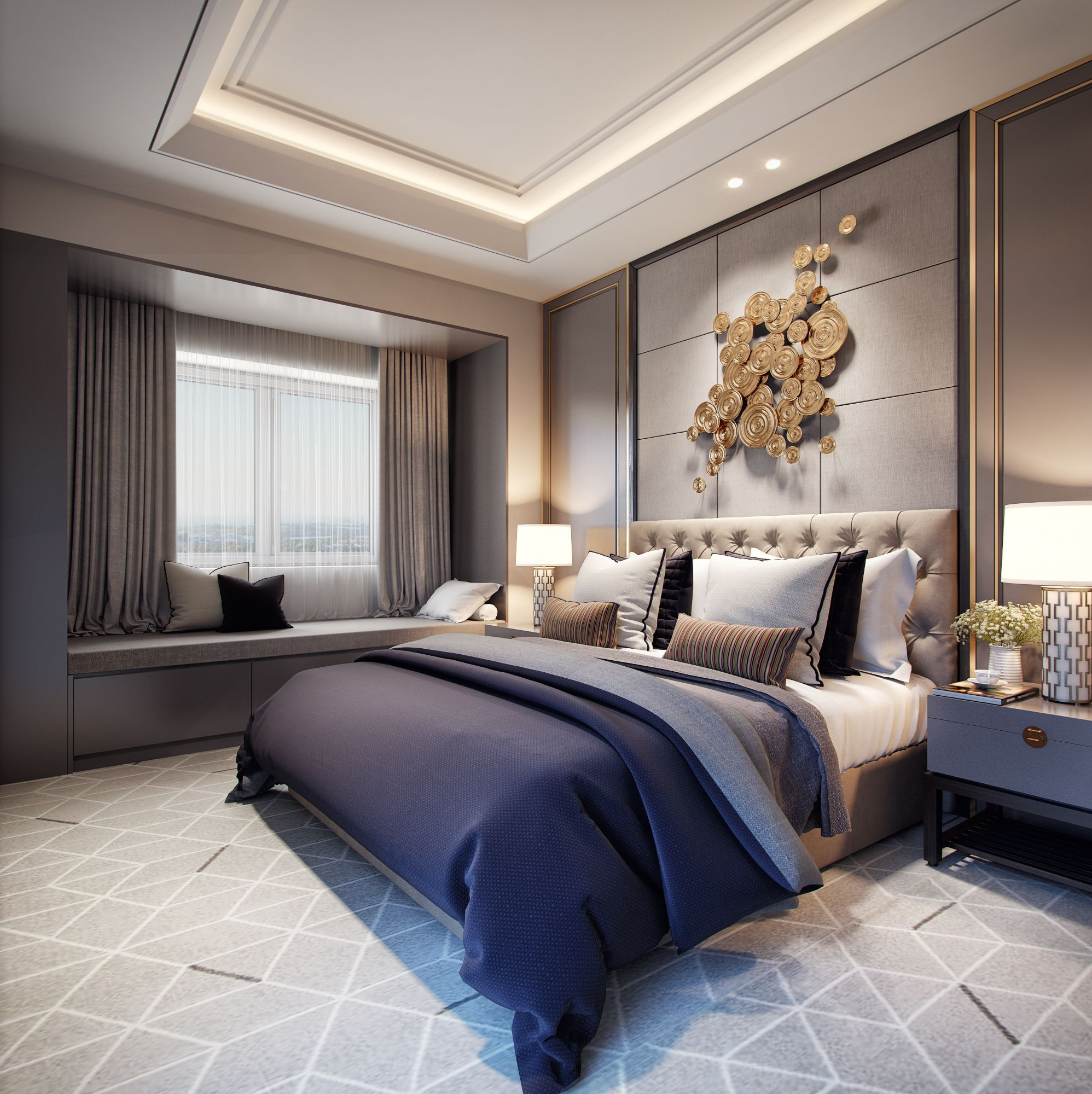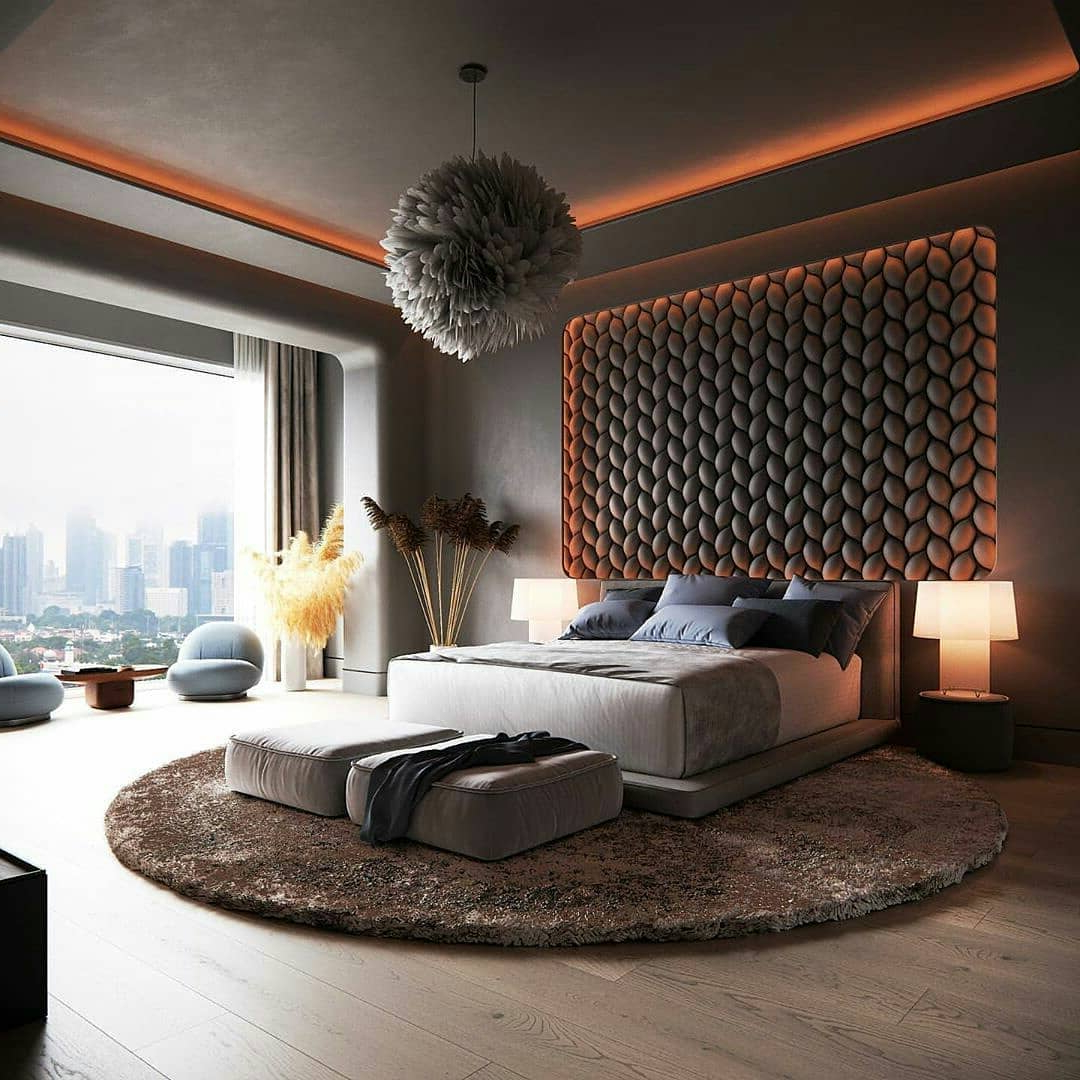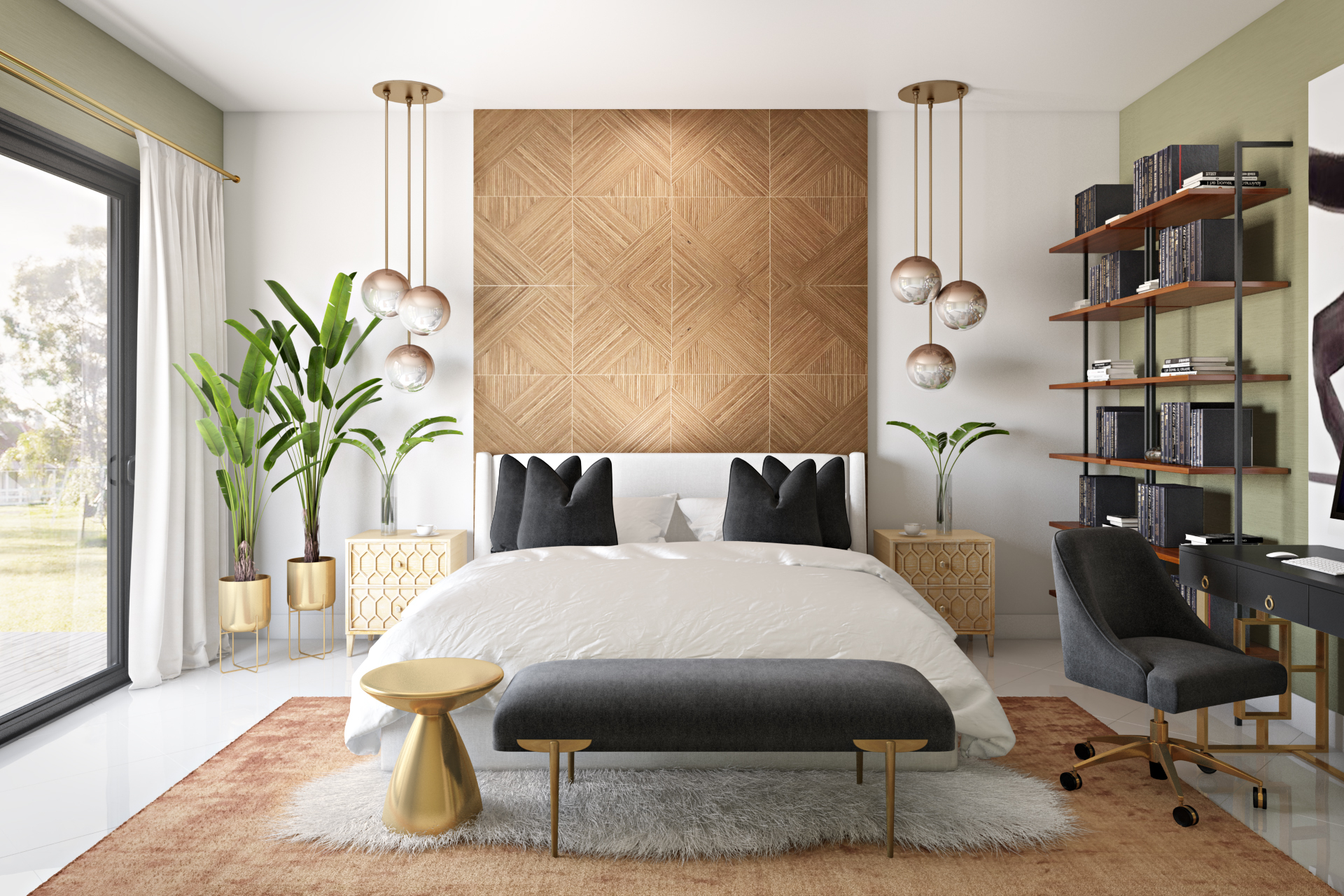What if the colors in your bedroom could influence how you sleep, feel, and wake up? The secret lies not just in what you see, but in how your mind and body react to different hues and tones. This isn’t just about pretty walls – it’s about creating an environment that supports your well-being and enhances your daily life.
Every night when you close your eyes, you’re entering a space that should feel like a sanctuary. But too often, our bedrooms are just another room in the house, filled with random colors and forgotten intentions. What if we could change that? What if we could use the science of color to create a space that helps us relax, sleep better, and wake up refreshed? Color theory offers us a roadmap to transform any bedroom into a haven of calm and comfort. It’s not about following rigid rules, but understanding how different colors affect our moods and behaviors.
Understanding Hue: The Foundation of Color Choice
Hue is the purest form of color – think red, blue, yellow, green, and purple. These basic colors are like the building blocks of your bedroom palette. Each hue carries its own energy and emotional impact. For instance, blues tend to promote tranquility while reds can energize and stimulate. When choosing your main hue for a bedroom, consider what kind of experience you want to create. A soft blue might be perfect for someone who struggles with anxiety, while a warm yellow could be ideal for someone looking to boost their mood. You don’t have to stick to one hue either. Many successful bedroom designs blend complementary colors – those opposite each other on the color wheel – to create dynamic yet balanced spaces. The key is to choose hues that align with your desired bedroom atmosphere.
Mastering Tone: The Secret Weapon for Depth and Mood
Tone refers to how light or dark a color appears, essentially controlling the intensity and depth of your chosen hues. A pale pink tone creates a gentle, airy feeling, while a deep burgundy tone brings richness and drama. In bedrooms, tonal variations are crucial for creating visual interest without overwhelming the senses. Think of your bedroom as a canvas where light and shadow play together. Lighter tones make spaces feel larger and more open, perfect for smaller rooms or those lacking natural light. Darker tones, on the other hand, can make large spaces feel cozier and more intimate. The trick is balancing these tones to match your personal preferences and the room’s characteristics. For example, a bedroom with high ceilings might benefit from darker tones to create a cocooning effect, while a low-ceilinged room might look better with lighter tones to maintain a sense of height.
The Power of Warm vs Cool Colors in Sleep Spaces
Warm colors like reds, oranges, and yellows are energizing and can make a room feel cozy and inviting. They’re excellent choices for areas where you want to encourage social interaction or creativity. However, in bedrooms, they might interfere with relaxation. Cool colors such as blues, greens, and purples tend to calm the nervous system and can aid in better sleep. But here’s the interesting part – it’s not about avoiding warm colors entirely. It’s about thoughtful placement and proportion. A bedroom with predominantly cool tones can still incorporate warm accents through textiles, artwork, or decorative elements. This balance creates a sophisticated space that feels both peaceful and comfortable. The key is to ensure that the dominant color scheme supports restful sleep rather than disrupting it.
Creating Harmony Through Color Temperature
Color temperature refers to whether a color leans toward warm or cool tones. Understanding this concept helps you create cohesive spaces that feel intentional rather than chaotic. A bedroom with mixed color temperatures can feel jarring unless you approach it thoughtfully. For example, if you choose warm-toned beige walls, you might pair them with cool-toned bedding to create contrast. Or, you might opt for a monochromatic scheme using various tones of the same hue, ensuring all elements work together harmoniously. The goal is to find a balance that makes your bedroom feel complete and intentional. Consider how natural light affects your chosen colors throughout the day. A room that looks beautiful in morning light might appear completely different under evening illumination. Testing your color choices during different times of day can help you make better decisions.
Practical Applications: Real-World Bedroom Color Scenarios
Let’s talk about actual situations. Imagine a small bedroom with limited natural light. In this case, using light, neutral tones can make the space feel bigger and brighter. Adding a single accent wall in a soft blue or green can provide visual interest without overwhelming the eye. For a master suite with large windows, you might consider deeper, richer tones that complement the natural light and create a luxurious atmosphere. Another common scenario involves couples with different preferences. One partner might prefer bright, cheerful colors while the other prefers calming, muted tones. Finding a middle ground through careful selection of complementary hues and strategic use of textures and materials can satisfy both parties. Remember, it’s not about compromise – it’s about creating a space that works for everyone involved.
Beyond Basics: Advanced Techniques for Bedroom Design
Advanced color techniques can elevate simple bedroom designs into extraordinary spaces. One powerful method is using the 60-30-10 rule, where 60% of the room uses a base color, 30% a secondary color, and 10% an accent color. This approach ensures visual balance while allowing for creative expression. Another technique involves layering colors through different materials – paint, fabric, wood, and metal – each contributing their own subtle tonal variations. Textures also play a vital role in how colors are perceived. A soft velvet blue might feel completely different from a matte blue paint. Finally, consider how colors interact with lighting. LED lights can dramatically change how a color appears, so testing different bulb types can reveal unexpected results. The most successful bedroom designs often incorporate multiple layers of color and texture working in harmony.
The journey to your dream bedroom starts with understanding that color isn’t just decoration – it’s a powerful tool for shaping your environment and your well-being. By mastering the basics of hue and tone, you’re not just painting walls, you’re crafting experiences. Whether you’re drawn to the calming embrace of cool blues or the warm comfort of soft earth tones, the key is to approach your choices with intention and awareness. Remember, there’s no one-size-fits-all solution. Your bedroom should reflect your personality, support your lifestyle, and make you feel truly at home. The principles outlined here offer a framework for making informed decisions that will transform your sleep space into something truly special. Give yourself permission to experiment, trust your instincts, and enjoy the process of creating the perfect retreat for your mind, body, and soul.















